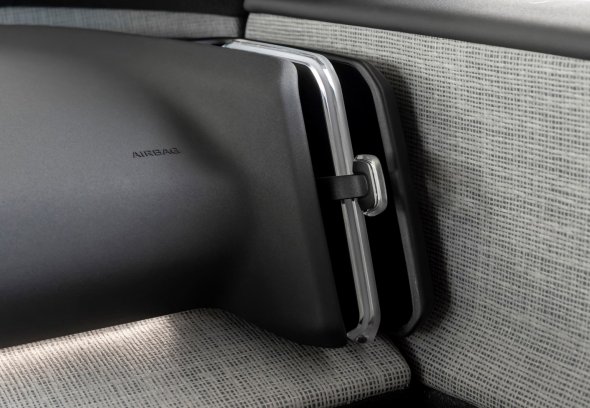
Focus on flax for Saertex
Scalable production, high-speed thermoplastic processing and multiple aesthetic colours moving adoption forwards.

27th May 2024
Innovation in Textiles
|
Paris
Automotive and mobility manufacturers continue to evaluate flax and hemp materials across their model ranges according to the Alliance of European Flax Linen and Hemp.
Natural fibres have been used for many years to reduce the carbon footprint in components such as acoustic insulation, headliners and interior mouldings that exploit their vibration damping and noise, vibration and harshness (NVH) benefits. These applications, however, have generally been parts that kept the fibres hidden and flax is now being used in more visible parts and in significantly higher volumes.
Volvo EX30
In one of the first visible interior trim packages to be available for a large volume series produced car, the new, all-electric Volvo EX30 marks a major step for Volvo and Swiss alliance member Bcomp, as customers can now select two interior trim packages featuring the natural aesthetics of woven ampliTex flax fibres.
The compact SUV is designed to have the lowest carbon footprint of any model in Volvo’s history.
Bcomp has recently completed its Series C funding round with a $40 million investment, led by Swiss institutional investor EGS Beteiligungen AG (EGSB), allowing the company to scale-up its production capacity for the automotive sector and develop new customer markets.
Greenlander
Representing the more bespoke end of the transport market, Greenlander, in partnership with investor and flax material specialist Depestele, showcased the Sherpa – the ultimate 4x4 expedition vehicle built to leave less impact as it travels – at JEC World Paris 2024 in Paris this year. The Sherpa, which will be formally launched at the Caravan Salon in Dusseldorf this summer, combines plant-based fibres like flax with bio-based resins and sustainable core materials like cork, wood and recycled PET foam to create durable and lightweight components.
As well as the low impact materials, Greenlander also provides a unique business model, offering the composite items as a service and taking them back at the end of their life to be repurposed or recycled.
Colour
Several other alliance members have developed coloured flax solutions which are likely to become increasingly important as visual fibre flax solutions become more established in transport applications. Bcomp has successfully established a production route for back-injected automotive interior parts that uses its ampliTex and polypropylene (PP) thermoplastic materials, combining the speed and cost benefits of back-injection with the sustainability and performance improvements of coloured natural fibres.

Terre de Lin, a specialist in the production of dedicated flax fibres and rovings for composites, also launched 100% dyed flax fibre coloured rovings at JEC World Paris 2024. These untwisted 200 to 2,400 tex rovings are chemical free and suitable for weaving, knitting, braiding, pultrusion, filament winding and automatic fibre placement (AFP) processes.
“The latest automotive market developments for flax fibres see these unique natural fibres establishing a position as leading technical alternatives to traditional composite fibres,” says Julie Pariset, innovation and CSR Director at the alliance. “Scalable production, high-speed thermoplastic processing and multiple aesthetic colour options now enable our members to meet mainstream automotive industry customer requirements.”

Business intelligence for the fibre, textiles and apparel industries: technologies, innovations, markets, investments, trade policy, sourcing, strategy...
Find out more